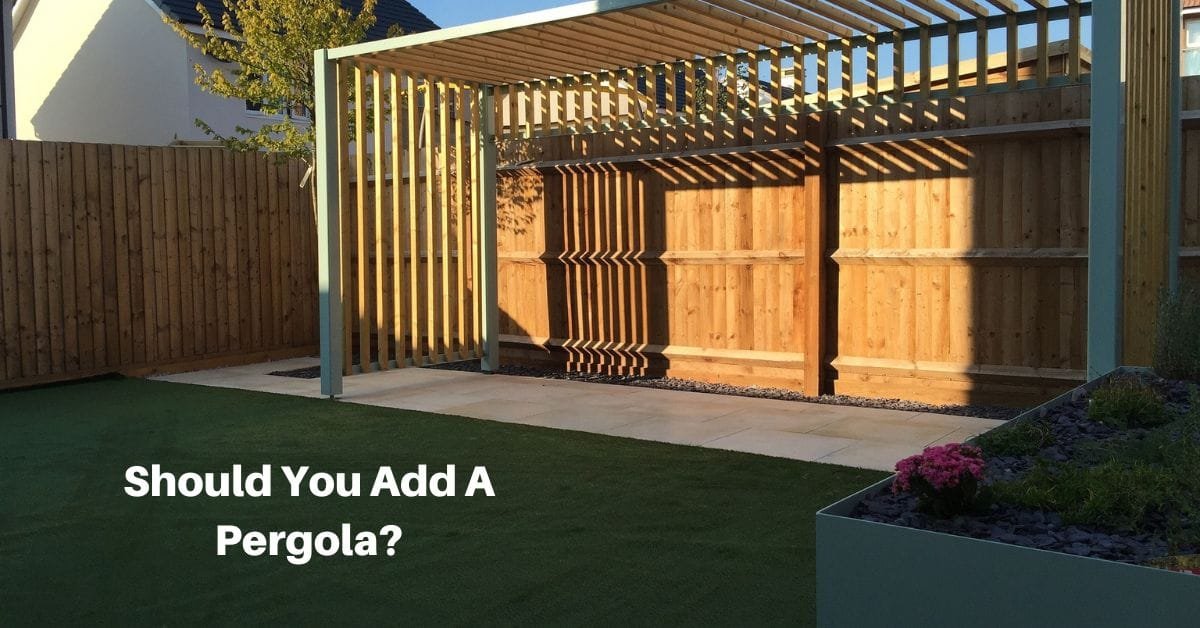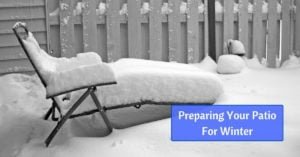It’s always been popular to take advantage of the outdoor spaces that are part of your home. One popular feature is the pergola because of its aesthetic appeal and practical benefits.
Is a pergola a good choice for your yard? Let’s discuss what it offers, the different types available, and how it can fit into your outdoor lifestyle.
The Appeal of Pergolas
Pergolas are open, airy structures that provide shade. They can add a striking element to your yard. They typically consist of vertical posts supporting crossbeams and an open lattice. The lattice can allow climbing plants or vines to grow, creating a more natural and integrated feel in your landscape.
While they don’t offer full coverage like a solid roof, pergolas create a pleasant, dappled shade and can help make your outdoor space more enjoyable, especially during sunny days.
Pergolas have become more popular in recent years thanks to the trend of creating outdoor “rooms.” Backyards have become functional extensions of homes, whether for dining, lounging or simply enjoying nature.
Benefits of Having a Pergola
One of the most appealing aspects of a pergola is its versatility. It can offer a range of benefits, from enhancing the overall aesthetic of your garden to providing a practical space for entertaining or relaxing. Some of the main advantages are:
- Aesthetic Appeal: Pergolas can instantly elevate the look of your yard with architectural interest and charm. Whether you’re going for a sleek, modern look or a more rustic, natural vibe, a pergola can fit seamlessly into most landscape designs. You can customize it with vines, hanging plants, or even outdoor lighting to help it uniquely blend into your space.
- Shade and Comfort: A pergola won’t block out all sunlight, but it offers much-needed shade, especially during hot summer. If you live in an area where sun exposure can make outdoor spaces uncomfortable, a pergola can create a cooler, shaded environment without closing off your yard entirely. It allows air to circulate while softening the intensity of direct sunlight.
- Versatility in Use: A pergola can be used for various purposes. You may enjoy using it as a dining area, perfect for outdoor meals or parties. Or you could create a cozy seating space, ideal for relaxing with a book or enjoying a cup of coffee. A pergola can even be a garden feature, offering a support structure for climbing plants or providing a backdrop for your flower beds.
- Increased Property Value: A well-designed pergola can increase the value of your home. Potential homebuyers prize outdoor living features and a pergola adds to your yard’s functionality and visual appeal. It shows that the space has been thoughtfully designed, making your home more attractive if you ever decide to sell.
Types of Pergolas
Once you’ve decided that a pergola suits your yard, consider the different types available. Pergolas come in various materials and styles, so you can choose the one that best matches your home and personal taste.
- Material Choices: The most common materials for pergolas are wood, vinyl, and metal. Each comes with its advantages:
- Wood: Offers a natural, classic look that can be painted or stained to match your outdoor aesthetic. Cedar and redwood are popular options due to their resistance to rot and insects.
- Vinyl: Low-maintenance and durable, vinyl pergolas are excellent if you want something that doesn’t require frequent upkeep.
- Metal: Aluminum and steel pergolas provide a sleek, modern look and are durable. They often have powder-coated finishes that resist rust and corrosion.
- Design Variations: Pergolas can be freestanding or attached to your home, depending on the layout of your yard and your preferences.
- Freestanding Pergolas: These are ideal for creating a distinct outdoor area, such as a garden retreat or poolside lounge.
- Attached Pergolas: Fixed to the side of your home, these extend your living space seamlessly, creating a patio-like feel outside your back door.
- Customization Options: Pergolas can be highly customizable. You might opt for a retractable cover that provides additional shade when needed. Built-in lighting for evening gatherings is another excellent choice. Adding plants such as wisteria or jasmine will give your pergola a natural feel and enhance the look of your garden over time. You can also incorporate accessories like curtains, outdoor fans, or heating systems to make the space usable year-round.
Considerations Before Building a Pergola
Before committing to a pergola, several important factors must be considered. Planning carefully is important to ensure that your pergola will serve its purpose while fitting seamlessly into your outdoor space.
- Space Requirements: The first and most essential consideration is having enough space for a pergola. If your yard is small, you might need to scale down the size of the pergola to ensure it doesn’t overwhelm the space or feel cramped. On the other hand, if your yard is large, you might want a larger structure to create a balanced aesthetic. You’ll also want to ensure there’s adequate room for seating, furniture, or plants within the pergola’s footprint.
- Location and Positioning: The location of your pergola is another key decision. Consider where the sun hits your yard throughout the day since it will affect how much shade your pergola provides. Also, consider wind direction—certain areas of your yard may be more exposed to strong winds, which could impact how comfortable or durable the pergola will be.
- Permits and Zoning Regulations: Pergola installation could require permits. Before building, it’s crucial to check local zoning laws and homeowner association rules. These regulations often dictate how large a structure can be, how close it can be to property lines, and whether additional approvals are needed. Failing to obtain the correct permits can lead to costly fines or even the removal of the structure, so it’s best to get this sorted out ahead of time.
- Maintenance Needs: The amount of maintenance required will vary depending on the material you choose. Before choosing a material, consider how much time and effort you’re willing to invest in maintaining your pergola over the years.
Costs and Budgeting
The cost of a pergola can vary widely, depending on the materials, size, and additional features you want. Setting a budget early will help you narrow your choices and avoid overspending.
- Cost Factors: When budgeting for a pergola, consider the materials, size, and complexity of the design. Wood tends to be more affordable but can require more maintenance over time. Initially, vinyl and metal options are often more expensive, but they save on long-term upkeep costs. Also, think about any extras you may want to include, such as lighting, heating, or custom landscaping around the pergola, all of which can add to the overall price.
- DIY vs. Professional Installation: If you’re handy and confident in your building skills, consider installing the pergola yourself. DIY kits are available and can save you a significant amount of money. However, professional installation offers the assurance that everything will be done correctly, from the foundation to securing the posts. While DIY pergolas might be less expensive upfront, hiring a professional could save money on repairs down the road.
- Long-Term Investment: A pergola is more than just an immediate addition to your yard—it’s a long-term investment in your home’s outdoor living space. Consider how much you’ll use the pergola. If it becomes a central gathering place for your family and friends, the return on investment in terms of enjoyment alone can be significant.
Is a Pergola Right for Your Yard?
Now that we’ve explored the various factors involved in installing a pergola, it’s time to consider whether it’s the right fit for your yard and lifestyle. Pergolas offer many benefits, but they’re not ideal for every situation. Here’s what to think about when making your final decision.
- Purpose and Functionality: Ask yourself how you plan to use the pergola. Is it primarily for creating shade? Or is it more of an aesthetic addition, covered with climbing plants? It could be an entertainment area for family gatherings or a quiet outdoor retreat. Defining its purpose will help you decide if it’s your best choice or if another feature might better suit your needs—like a gazebo, shade sail, or patio awning. If your goal is more about creating privacy in an open yard, adding curtains, lattice, or screens to a pergola can achieve that effect.
- Weather Conditions: Your local climate significantly determines whether a pergola is an intelligent investment. If you live in a region with extremely harsh winters, frequent heavy rains, or intense sun, you’ll need to choose durable materials and reinforce the structure to ensure longevity. A pergola that doesn’t offer full shade coverage in very sunny areas might not serve its intended purpose. However, in milder climates, it can be the perfect balance between shelter and openness, providing just the right amount of shade while allowing for fresh air circulation.
- Aesthetic Value: Consider how a pergola will impact the overall look of your yard. A well-designed pergola can become a stunning focal point. It’s easy to match the style of your home, whether modern, rustic, or traditional. Pergolas are also perfect for creating vertical interest in your yard. Climbing plants like wisteria, jasmine, or grapevines enhance its beauty and bring in natural shade and fragrance.
- Seasonal Use: Pergolas can be used year-round in some regions, but in colder climates, their use may be limited to the warmer months. Think about how often you’ll realistically use the pergola. Will it sit unused for long stretches during winter or rainy seasons? If so, is the investment still worthwhile? You can extend its usability by adding a pergola cover, windscreen, or heating elements, but these features add to the cost and maintenance.
Ultimately, deciding if a pergola is right for your yard comes down to balancing practicality, aesthetics, and your lifestyle. Pergolas can transform outdoor spaces into functional, beautiful areas for relaxation or entertainment. Still, they require thoughtful planning and ongoing maintenance. Think about your space, budget, and intended use to help you make an informed choice.









